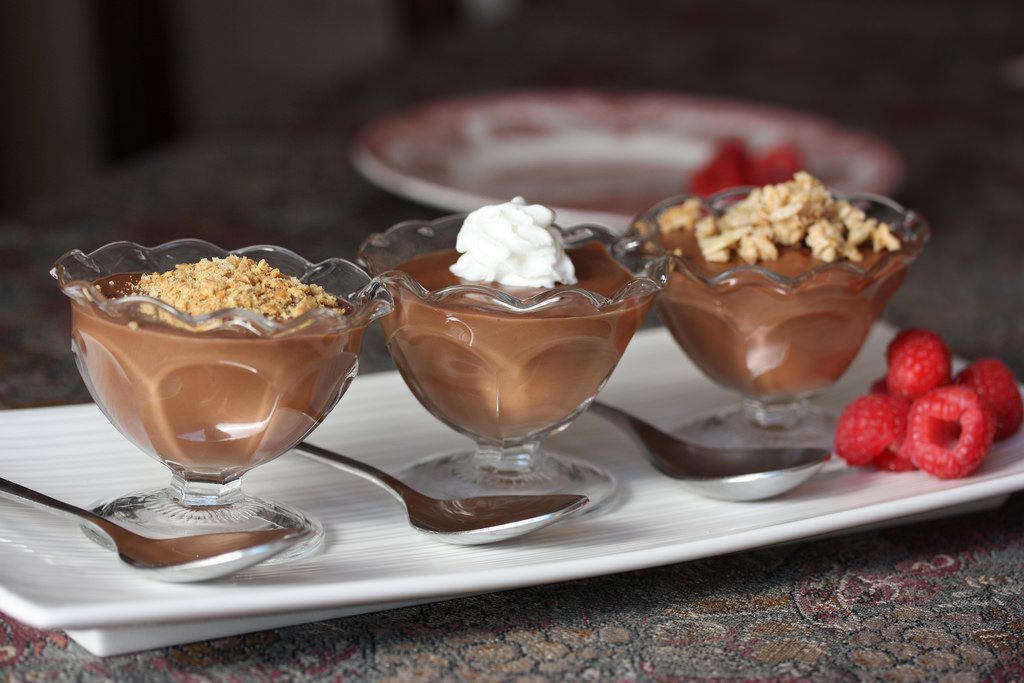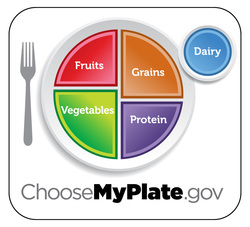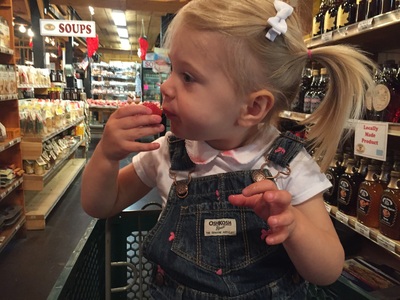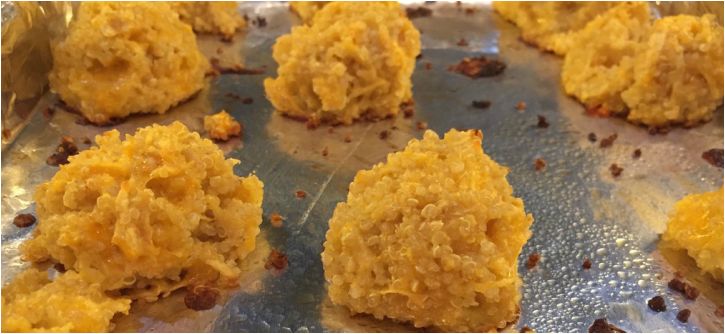|
How do you fill in the blanks? Water, Water Everywhere – ____ ____ Drop to Drink
I don’t like to speak in absolutes and extremes, but I can say for sure that there is a topic that has come up with 100% of my clients over the past 4-6 weeks. Hydration. Specifically water- how much and what type. If you’re reading this, you are likely asking yourself at least one of the following:
When did our choice of ‘water’ come with so many more options than bottled or tap? To (over) simplify it, innovative people knew healthcare professionals were promoting hydration via low to no calorie options and consumers demanded options that tasted good. This was also occurring around the same time that a variety of alternatively sweetened beverages were hitting the market and consumers were hearing messages to decrease the amount of sugar-sweetened beverages in our diets. Pair an innovative person and a business-person (perhaps the same person) and we started to see a shift in what was being sold at the stores.
The bottom line – to stay adequately hydrated the recommendation is to drink calorie and caffeine free beverages while consuming foods with high water content (i.e. fruits).
1 Comment
A few years ago my husband and close friends realized two things when eating with me:
I stopped sharing my creations and just enjoyed them myself. Then one ordinary day while hanging out in the kitchen my husband complained that I was “holding out on him” when he discovered brownies I had made. I didn’t say anything but just passed the plate of brownies his way, gesturing for him to take one, and I went back to cleaning the kitchen. When I reached for another brownie myself the next day I knew there was going to be trouble - there was only one left (at least he saved me one, I guess?). The problem is, that meant he ate six brownies yesterday. Clearly there was a portion control issue, but more importantly – there was a fiber issue. You see, he had no clue that I replaced the flour with pureed black beans. It wasn’t my sneaky ingredient itself that caused his issues; it was the quantity he chose to consume. A few trips to the bathroom later, as well as a few years and lessons on portion control later, and we can all laugh about this. I’m still sneaking in foods to fool friends & family, occasionally – but I do not do this if I do not know their food allergy history! New friends always get a full disclaimer on what is in my creations. So, if you have someone you want to fool coming up on April 1st or you just want to boost the nutrition of some familiar foods, here are a few of my go-to’s these days and who they might work for: Food: Brownies Fool: Black Beans Recommended Consumer: Co-workers Why the switch? Replace refined carbohydrates with fiber and protein but keep the decadent flavor. Preparation Details: Black Bean Brownie recipe adapted from http://minimalistbaker.com/vegan-gluten-free-black-bean-brownies/) Food: Macaroni and Cheese Fool: Cauliflower Recommended Consumer: Toddler Why the switch? Same creamy texture and rich taste but with less fat and more fiber and nutrients. Preparation Details: Start with a box of whole wheat mac & cheese and cook noodles according to the package directions. While the noodles are draining, add ½-1 cup of pureed cauliflower (if using a white cheese) to the warm pot along with 2-4 Tbsp milk and the cheese packet. Mix until the cheese dissolves and you achieve your desired consistency (start with less veggies and work your way up to more!). Add the noodles back to the pot with the cheese sauce, toss to combine and serve. Alternative: If you are using a yellow cheese, you can use pureed carrots, butternut squash or sweet potato in place of the cauliflower. I keep ½ cup portions of pureed veggies on hand in my freezer for quick veggie-filled meals! Food: Ice Cream Fool: Bananas Recommended Consumer: Partner or friend Why the switch? Maintain the texture and mouth feel with no fat, less sugar and more fiber and vitamins. Preparation Details: When you have bananas on the counter that are past your preferred ripeness, don’t throw them away! Peel them and store properly in the freezer. In a food processor or high-powered blender, simply add in frozen bananas and blend until they are the consistency of ice cream. Two medium bananas usually gives me 1 cup of ‘ice cream’. Top with crushed almonds , peanut butter, or mini chocolate chips and enjoy your fruit-filled frozen dessert! Some simple swaps make it possible to fool someone and boost the nutrition of familiar foods – just remember to be transparent if food allergies are a possibility. Do you have experience fooling with food? I’d love to hear about it in the comments below! If you prefer to really fool with food, that may or may not be edible, check these out: More resources and links for swaps, fools and boosting nutrition:
Why is it that, as a trained nutrition expert and serial over-planner, I sit here and wonder what I’ll be eating next week? It’s not because I’ve procrastinated and don’t have a meal plan or that the fridge and pantry are bare with no time to grocery shop. It’s also not because I’m getting swept away to some far off place where I’ll be wined and dined. Nope, that would be nice. It is because I will be starting an elimination diet. Yes, I said the word DIET. And yes – I mean an eating plan that I will follow for a short period of time and then move on from. Finally, I don’t know what it is that I will be eliminating – and therefore eating - just yet. Two days ago, after another unexplained illness, I decided it was time to finish something I started a long time ago that will help me personally and professionally. I am talking about becoming a Certified LEAP Therapist (CLT). LEAP™ stands for Lifestyle Eating and Performance and is an effective protocol that is followed to arrive at an individualized anti-inflammatory eating plan. There are many foods that are being touted as anti-inflammatory these days, but just eating those items isn’t always helpful because for some people those “anti-inflammatory’ foods are actually the source of the problem. The LEAP protocol is based on the results from the patented Mediator Release Test (MRT). Let’s go back a little further than two days ago, 10 years or so to when I first heard about LEAP and MRT. I had an employee who wanted us to pay for her to get certified and I was skeptical of it all. I was not yet aware of all of the research on food intolerances but I supported the employee in heading down the certification path so we could learn more about it together. Unfortunately she needed to resign before completing the process so for me it was out of sight out of mind. Fast-forward about 8 years, during which time I had a myriad of illnesses, tests and hospitalizations but no real answers or diagnosis, and I had another employee approach me about becoming a Certified LEAP™ Therapist. I picked right back up with her and supported her interest. It was about 1 year ago, after we both left our respective jobs, that I decided if I was really going to learn what the protocol was all about, I was going to need to become certified myself. When I’m skeptical of something I like to learn all I can about it and I learn much better from doing. It was also about 1 year ago that I was hospitalized again and started thinking that maybe I could benefit from LEAP. I ordered the materials and began studying. Now, here I am awaiting my results of both the MRT and my certification exam. I’ve been keeping a detailed food and symptom log for the past 4 days and boy can they be a pain to fill out to the level of detail a registered dietitian would want to see! But, it’s already been helpful in identifying some possible triggers, which keeps me motivated to continue with it. Here is a sample of some of the other thoughts going on in my head. I also included my restructured thoughts – an exercise I would do with my clients to help maintain a positive outlook.
While I am hopeful my restructured thoughts will be found true over the next few weeks, I also want answers so I can resume planning. The one ingredient that is often, but not always, eliminated for the first 10 or so days is dairy. So I will start with planning to either eat all of my dairy containing foods the next few days or quarantine them until I know they are safe for me again. Regardless of my personal outcome from this diet, I can say for sure that I will be a more compassionate clinician as a result of this LEAP™! And as new CLT, I will not be taking this LEAP alone as I’ll have my LEAP mentor, Jan, alongside of me to understand my personal results and the nuances that arise with my clients.
Off I go to inspect my food labels for hidden sources of dairy – did you know some lunch meats, breads and even potato chips may have dairy in them?! If you are a Registered Dietitian Nutritionist interested in becoming a CLT or happen to be interested in experiencing the MRT and LEAP protocol yourself, you can find out more about them here www.nowleap.com or by contacting my LEAP mentor, Jan. The purpose of this blog is not to discuss the protocol, but instead provide you with insights into someone going through both the certification process and the eating plan. And honestly, I’m thinking that by making the process more public I will hold myself more accountable – we all need to do what holds us accountable! According to "What's Trending in Nutrition" plants will be powering consumers’ plates in 2017. So who better to talk trends with than Sharon Palmer, The Plant-Powered Dietitian?!
This annual survey conducted by Today’s Dietitian and Pollock Communications asks dietitians (1700 responded) to weigh in on what we think will, and won’t, be weighing on our clients’ minds in the coming year. Below is a summary of our discussion on the survey: Sharon and I agree that the term Superfoods can send shivers up the spines of some registered dietitians, since it’s not a clearly defined or regulated term. Additionally, it’s not up to one food to provide the necessary nutrients for each unique individual. This survey calls out 10 foods themes, or Superfoods, that dietitians feel Americans will consume more of this year. Eight out of these 10 food themes are centered on plants with a focus on fats taking the top 3 spots [Seeds, Avocado & Nuts]! As a dietitian, I would be thrilled with an increase in consumption of these food themes this year - they are nutrient rich and have potential health benefits, when eaten in moderation and are balanced with high-quality foods from all food groups and an active lifestyle, of course. Speaking of moderation and balance – Sharon and I also discussed our excitement around a focus on overall Meal Patterns as opposed to ‘Diets’. Let’s continue to focus on what we CAN eat and how to ENJOY all of it, over time! When we eat due to physical hunger, stop when we are full and get a balanced intake of varied nutrients throughout the day and over the week, we are eating mindfully. When was the last time you stopped, closed your eyes and smelled your food before eating it? When was the last time you slowed down at mealtime and really tasted your food? Heck, when was the last time you didn’t multi-task while eating? These are all examples of being more mindful around eating, and practicing them more often will help clue you in to your bodies’ signals of true hunger and fullness. I asked Sharon about her favorite resources on mindful eating and she said that she likes Brian Wansink’s work and added that food diaries and apps can play a part in mindful eating if it helps someone to be more aware and “avoid the nonstop noshing”. Compared to 2016, dietitians report there will be less concern in 2017 over things such as GMO-free, sustainable or gluten-free. This doesn’t mean consumers aren’t still thinking about these things; it’s just that there are other areas creeping into the minds of consumers ahead of them. Sharon and I agree with the surveyed dietitians that an increase in transparency on the part of the food industry is likely a contributing factor. I hope the decrease in concern is also a result of registered dietitians educating shoppers on food facts and more consumers understanding how individual nutrition advice really is! I’d love to hear your thoughts and questions on these topics so keep the conversation going in the comments section below! For more information on the "What's Trending in Nutrition" survey, visit: http://www.prnewswire.com/news-releases/national-survey-taps-over-1700-dietitians-to-predict-top-2017-food-trends-300376374.html For more information on Sharon or to read her blog, check out: http://sharonpalmer.com/meet-sharon/ As a dietitian, there is not much I enjoy more than speaking with someone about their food choices and discussing ideas to make small changes to reach their health goals when they are really interested. On the flip side, there is not much I enjoy about talking to someone when all they want is for me to validate nutrition myths they have heard or think I can just “give them a meal plan on the spot”. The challenge: You or someone you know wants a free & quick answer for a nutrition question but is frustrated when the answer you receive isn’t applicable to your life. However, you or your friend isn’t able or willing to invest the time and money for a qualified professional to provide a personalized answer. The solution: This post shares some free tools and resources that you can access to get answers to frequently asked food and nutrition questions. If you have additional questions on how to apply this to your life or think that meeting with a registered dietitian would be beneficial, click here to find a qualified professional near you. Q: “I have no idea how many calories I NEED TO EAT, just tell me what to eat”
Q. “I have no idea how many calories I EAT, I ate X-Y-Z yesterday, how many calories is that?”
Q. “Is ______ [insert specific food or brand]______ good to eat?
Q. “How can I get my son/daughter to eat better?”
Q. “I would eat more fruits & veggies if I knew hot to prepare them – can you tell me how to buy and prepare ________?”
I know most of you fall somewhere in between the above two scenarios: you have a nutrition question or interest, but you either don’t need in-depth counseling, can’t afford the out of pocket expense, or don’t have easy access to a registered dietitian nutritionist. Let me know what else would be helpful to see here! What is your favorite food and nutrition resource? Link to it in the comments below to share!
As you may have heard, August is Kids Eat Right Month™. Yes, today is also #NationalChocolateChipCookieDay and I’ll be sure to explain how these two can actually co-exist!
Whether you are a parent, grandparent, aunt, teacher or friend – our responsibility, as an adult, is to feed kids nutritious meals and give them proper tools to make healthful eating choices, which will benefit them now and as they grow into adults themselves. “Kids Eat Right” divides their information and resources into three focus areas and organizes it based on your role with kids so you can focus on what is right for you, right now. Just like adults – the foods that kids choose to eat and what foods are ‘right’ will not look the same for everyone and may change over time. Three Focus Areas:
SHOP SMARTResearch shows that kids who are involved in the first two focus areas, shopping smart and cooking healthy, are more likely to follow-through with the third area of eating right.  Think about your current shopping and cooking routine….you do have some sort of routine for this, right ;)? Now – what are some ways that you can involve your kids? Remember – it will take a little longer and a LOT more patience but the ROI - from the laughs & memories to a lifetime of good eating habits – is WELL worth the investment. Ok, back to your routine. To start, I recommend changing your focus regarding the grocery trip or meal prep. If your current focus is to get the groceries as quickly as possible and escape the store without any embarrassing public displays by your kids, I can see why you may be hesitant to involve your kids in the process. However, the grocery store is a natural classroom and when you engage your children, they are excited to be a part of the process. If you have ever run into me buying bell peppers with Luciana, you would hear me saying things like:
Clearly this will make your trip a little longer and I highly recommend planning the experience when you know your kids are set up for success (i.e. not exhausted and not starving) and the store isn’t packed. Tip: We all know snacks help pass the time and I don’t like to use food as a reward or a distraction – but I do love to encourage new foods. Can you pay for something before you begin and snack on it along the way? Does your store offer free fruit or cheese to kids? Don’t go right for the food, but incorporate it when it’s needed and make it part of the learning experience. COOK HEALTHYFast forward through the challenging time of getting out of the store without something shiny that caught their eye to when all of the groceries are put away and you are ready to cook.  If possible, I like to get a head start on the prep while Luciana sleeps – it gives me time to get my game plan together and figure out what jobs I need to do and how she can help. In our house, if Luciana is awake and I head to my ‘prep station’ she will come running and drag her stool along with her because she knows it’s time to cook and “Lucci help”. Let’s bring back our red peppers from the grocery store – while I’m doing things that are best left for an adult (i.e. using sharp knives, portioning raw meat, etc) I may ask Luciana to:
EAT RIGHTI touched on how to include kids in shopping smart and cooking healthy, don’t forget to include them in the meal and conversation. Encourage kids to talk about what they did to help prepare the meal with the rest of the family. So, you get the importance of the Kids Eat Right Campaign and you want to promote quality nutrition for kids? Fantastic! But, don’t forget – kids are always watching….are you modeling the behavior you want to see in your kids? If so, you’ll be celebrating #NationalChocolateChipCookieDay by having just one small cookie, sharing a cookie with your kids, trying an allergen-friendly recipe, or making a recipe that uses less sugar and more whole grains than a traditional cookie, like these from the mastermind behind our month-long challenge. After all, it’s called “Kids Eat Right,” not “Kids Eat Unrealistically”  August is Kids Eat Right Month™, the Academy of Nutrition and Dietetics and the Academy Foundation's chance to highlight the fight for our children's healthy future. Find out how you can get involved!
As a follow-up to my blog post on meal planning – I'm sharing some tips & ideas for eating between meals. To get started ask yourself - “How many times do I snack a day, on average?” Now – how did you define a “snack”? Is it defined by the time of day you eat something, the type or amount of food you eat, or where/how you eat the food? According to Merriam Webster a snack is a small amount of food eaten between meals. The concept of “snacking” is widely agreed upon but vaguely defined: ‘small amount’ of food is relative and everyone’s nutrient needs are different, not to mention the variation in meals and timing. When I work with clients, I’m not as concerned with which definition you use to define snacking – what I care about is ensuring we have agreed upon our definition, if snacking is something we develop goals around. For this article, I’m going to ask you to think about snacks as ‘mini meals’ that can be eaten any time of day and that provide the calories & nutrients YOU need to meet your daily needs. Why a mini meal? Because just like a meal, snacks that include multiple foods groups will provide a wider variety of nutrients and help keep you fueled until your next meal or eating occasion. How do you know if a mini-meal is right for you or your family? |
| Ingredients:
| Directions: Place all ingredients in a blender or food processor and blend until smooth, scraping the sides occasionally. Portion into containers, cover and refrigerate at least 1 hour. BONUS: the sides of your blender will likely be coated in chocolate – after scraping what you need to portion it out, place ½-1 cup of milk in the blender and make a glass of delicious chocolate milk while ‘cleaning’ the insides of your blender. |
Nutrition Info: (for 1/8th of the recipe, about 100grams)
110 calories, 5g fat, 19g carbs, 7g sugar, 5g fiber and 2g protein (will vary depending upon the type of ‘milk’ used)
Jobs for Luciana (2-3year old helpers):
110 calories, 5g fat, 19g carbs, 7g sugar, 5g fiber and 2g protein (will vary depending upon the type of ‘milk’ used)
Jobs for Luciana (2-3year old helpers):
- Peels & sorts the bananas – peel goes in the garbage and banana in the blender
- Plops the avocado in the blender that mommy cut, pitted and left in the peel
- Holds the measuring spoon over the blender while mommy pours the vanilla and we dump it in together
- Helps mommy count the number of Tablespoons of ingredients we put in
- Once the lid is safely on and she gets the go ahead – Luciana flicks the on switch and turns the speed up
- Official taste-tester
What is your favorite 'mini-meal'? Let me know in the comments!
While the title may be a bit dramatic, it’s also pretty accurate when you think about how it can apply to your life & MEAL PLANNING. A key to succeeding at any goal – be it a strategic business goal or a personal health & wellness goal – is to have a SMART goal that acts as your PLAN. “I want to be better at planning my meals” is more of a desire than a goal. A SMART goal around meal planning would be “I will prepare at least 5 dinners this week from food on hand, eating dinner out no more than 2 times”.
- The second statement is much more Specific – you are going to be preparing dinners more and eating out less, pretty straightforward.
- It’s Measurable – you can count how many dinners you made and how many you ate out. Now, I hope this isn’t the case – but don’t forget to count any dinners that you failed to eat. Your goal is 5+2=7, to be successful you need to eat all 7 dinners!
- The goal is Achievable (for some, maybe not you) – it takes into consideration that you have, or will, grocery shop and have the ingredients, knowledge & skill to prepare the meals you and your family want for those 5 dinners.
- It is also Realistic – assuming you grocery shop and prepare meals on a routine basis… if you haven’t prepared a meal at home in a month, starting with 5 dinners in a week may be unrealistic. And if you prepare every meal at home, this goal isn’t for you either! Remember, while the strategy is the same for business & personal goals – meal planning isn’t likely a Key Performance Indicator for you and you can adjust the goal to be more realistic for you and/or your family.
- Additionally, this goal is Time-bound: you have 1 week to meet your goal. You will either succeed and repeat/improve or miss the mark, see where you have opportunities and adjust your goal or make a plan to address your gaps. In order for the goal to be achievable and realistic, it’s important to know where you are starting.
- I write a plan for all meals for my family for each week.
- I write a plan of 1 or 2 meals each day for a couple days ahead.
- I think about meals for the next few days & foods I will need before going to the grocery store.
- I think about the meal I am going to eat or fix when I get to the grocery store.
- I think about what to order while driving into a fast food restaurant/calling for take-out
- I think about what I am going to fix or eat when I am hungry and my family is ready to eat
Where you are in your meal planning and where you PLAN (not want) to go will guide your specific next steps, here’s a few things to get you started with your plan:
- Reference “MyPlate” for a guide on how much of each food group you need based on your age, height, weight and activity level.
- Dedicate time each week for meal planning. It’s an important meeting with yourself that you shouldn’t cancel.
- Think about cooking extra to use leftovers for another meal. Either exactly the same for lunch or dinner the next day or use it another way, tonight’s leftover grilled chicken, corn & veggies will be great chopped and tossed with lettuce, olive oil, lemon juice and a handful of raw veggies for a satisfying salad tomorrow!
- Prepare as much as you can all at once to save you time. Personally I do not like to mess up my kitchen (the way that I do when I cook) more than once a week. There are some things that can’t be prepped ahead of time, but most veggies can be sliced or diced, meat can be marinated or even cooked and grains can definitely be batched cooked.
- Prepare your grocery list according to the layout of the store. This helps ensure you won’t get home and realize you forget a pretty key ingredient. Also, keep this list handy to you and the family and add to it as you run out of things throughout the week.
- Keep you pantry (fridge & freezer too) staples well stocked. A balanced meal is fruits/veggies, lean protein & whole grain. Can you think of at least 1 item from each of these groups that you can keep on hand for a last-minute meal? I’ll help: Frozen spinach, frozen cooked grilled chicken breast, can of unsalted diced tomatoes and whole wheat noodles.
- Use the FIFO (First In First Out) method to avoid food waste. Base your next meal or snack on what is going to go bad first. Have some bananas that are really ripe? Peel & toss them into the freezer to use in smoothies later or mash them up & create some Energy Bites [RECIPE BELOW].
- Get input and buy-in from those who you share meals with. This will go along way towards success (again, similar to your business goals and getting the key stakeholders on board!).
- Practice portion control. This is especially important if you are planning to use some of the food for another meal. Portion what you need to save and put it in the refrigerator right away to ensure the safety of the food – both from food borne illnesses as well as second-dinner sneaks that may lurk in your house.
- Repeat successes. Keep track of meal plans you and your family really liked and rotate through them – you don’t need to reinvent the wheel every week!
 My Back Up Plan: Salmon Salad
My Back Up Plan: Salmon Salad Ironically, I was invited to present “Meal Planning Strategies” at a worksite earlier this week. In preparing for my presentation, I let my meal prep portion of my plan slip. The night I came home from the presentation I had to go with a back-up plan and re-work the rest of the week to be sure nothing went to waste!
Some of my most favorite meals have come about as a result of needing to rely on staples or leftovers for a back-up plan. What is your favorite or go-to “back-up meal”? or is it a drive thru ;)
Mash banana and thoroughly mix in the next 3 ingredients, as well as honey if using. Add in the oats and chips, mix and cover. Place in refrigerator for at least 30 minutes to make forming the bites less stressful!
1 large or 3 small bites prepared as above will provide 100 calories, 4g fat, 13g carbs, 2g fiber, 3g sugar, 3g protein
1 large or 3 small bites prepared as above will provide 100 calories, 4g fat, 13g carbs, 2g fiber, 3g sugar, 3g protein
As I mentioned in my first post, nutrition is personal. This post I'm going to welcome you into my personal life and share a recipe and some tips that will align with your goals if you are trying to reduce your sugar intake, increase your fruit consumption, or finally use that giant bag of chia seeds you bought last year.
Today is one of those days (at least so far anyway) when everything is just clicking. I kicked butt in an early morning workout (Thank you OTF], we got to spend some time together as a family this morning, and I saw online that a local farm re-opened their “Pick Your Own” strawberries! [They had been really heavily picked last week, and people also picked too many unripe berries, so they had to close down for a bit while more, ripe, berries became available].
I didn’t know what to expect, but I love strawberries, being active outside and spending time with Luciana, so I figured it had to be a good time. When they asked us which container we wanted to take with us into the fields [rookie move – we didn’t bring our own container!] I of course picked the biggest one they had and thought to myself that it still wasn’t big enough. Then we waited for our ride up to the fields via an ATV since they didn’t want to run the full tractor for just a few people [like usual - we were one of the first groups there]. No big deal, the resident dog ran along side of us so Luciana was thrilled with the experience we received!
Next up – getting dropped off in the fields. We were told which patches were pretty heavily picked and which patches should have a good supply, and then we were on our own. Bonus – the sugar snap peas grow right next to the strawberries, they are in season and the same price per pound as strawberries so we could feel free to pick some peas too (Luciana LOVES peas). I was trying to balance enjoying the moment with Luciana – berry picking was a first for both of us – but also capture the excitement to share with our family (and now all of you!).
Today is one of those days (at least so far anyway) when everything is just clicking. I kicked butt in an early morning workout (Thank you OTF], we got to spend some time together as a family this morning, and I saw online that a local farm re-opened their “Pick Your Own” strawberries! [They had been really heavily picked last week, and people also picked too many unripe berries, so they had to close down for a bit while more, ripe, berries became available].
I didn’t know what to expect, but I love strawberries, being active outside and spending time with Luciana, so I figured it had to be a good time. When they asked us which container we wanted to take with us into the fields [rookie move – we didn’t bring our own container!] I of course picked the biggest one they had and thought to myself that it still wasn’t big enough. Then we waited for our ride up to the fields via an ATV since they didn’t want to run the full tractor for just a few people [like usual - we were one of the first groups there]. No big deal, the resident dog ran along side of us so Luciana was thrilled with the experience we received!
Next up – getting dropped off in the fields. We were told which patches were pretty heavily picked and which patches should have a good supply, and then we were on our own. Bonus – the sugar snap peas grow right next to the strawberries, they are in season and the same price per pound as strawberries so we could feel free to pick some peas too (Luciana LOVES peas). I was trying to balance enjoying the moment with Luciana – berry picking was a first for both of us – but also capture the excitement to share with our family (and now all of you!).
Fast-forward half an hour and we are back in the farm market with an almost full basket of strawberries – clearly the basket WAS big enough and my expectations for how many berries we would pick were unrealistic! Thanks to Luciana really enjoying the fruits of her labor while I picked up a few local items, we left with about a half a basket of berries - don't worry, we paid for them before she started snacking. ;)
As I mentioned, I had visions of bringing bushels of berries home and making all kinds of fun stuff (no real plans or ingredients on hand for any of the possibilities, mind you). Well – when we got home I estimated having about 5 cups of berries. I figured that was enough to make strawberry chia jam and then have some fresh strawberries to snack on tonight. Luckily, I always have chia seeds and maple syrup on hand – the only other ingredient for chia jam is lemon juice. Unfortunately I did not have any lemons or lemon juice today – but I did have some 100% orange juice left over from when Luciana was sick last week. I figured I’d try OJ instead of lemon juice this time. Chia seeds can soak up a lot of liquid and provide this recipe the thickness it needs to mimic the texture of jam.
Before I share the recipe and photo progression, you may be wondering why anyone would make chia jam when jams and jellies are readily available. I used to think this too – until I realized how SIMPLE chia jam is to make, what an EASY swap into my meal planning it is and how DELICIOUS it is. We make a lot of PBJs, homemade filled bars and eat a lot of jelly toast. I don’t always have homemade chia jam for these items, but I love when I have time to make some and keep on hand. Just swap this chia jam in wherever you’re currently using store bought jams & jellies – with the lower sugar and higher fiber content it should provide a steadier release of glucose and keep you feeling satisfied longer.
Fast-forward half an hour and we are back in the farm market with an almost full basket of strawberries – clearly the basket WAS big enough and my expectations for how many berries we would pick were unrealistic! Thanks to Luciana really enjoying the fruits of her labor while I picked up a few local items, we left with about a half a basket of berries - don't worry, we paid for them before she started snacking. ;)
As I mentioned, I had visions of bringing bushels of berries home and making all kinds of fun stuff (no real plans or ingredients on hand for any of the possibilities, mind you). Well – when we got home I estimated having about 5 cups of berries. I figured that was enough to make strawberry chia jam and then have some fresh strawberries to snack on tonight. Luckily, I always have chia seeds and maple syrup on hand – the only other ingredient for chia jam is lemon juice. Unfortunately I did not have any lemons or lemon juice today – but I did have some 100% orange juice left over from when Luciana was sick last week. I figured I’d try OJ instead of lemon juice this time. Chia seeds can soak up a lot of liquid and provide this recipe the thickness it needs to mimic the texture of jam.
Before I share the recipe and photo progression, you may be wondering why anyone would make chia jam when jams and jellies are readily available. I used to think this too – until I realized how SIMPLE chia jam is to make, what an EASY swap into my meal planning it is and how DELICIOUS it is. We make a lot of PBJs, homemade filled bars and eat a lot of jelly toast. I don’t always have homemade chia jam for these items, but I love when I have time to make some and keep on hand. Just swap this chia jam in wherever you’re currently using store bought jams & jellies – with the lower sugar and higher fiber content it should provide a steadier release of glucose and keep you feeling satisfied longer.
Strawberry Chia Jam
Makes 2 cups. Prep time: 5 minutes Cook time: 10 minutes Chill time: 2 hours
Don’t have maple syrup? You can use honey, agave nectar or sugar. Clearly you can also replace the orange juice with lemon juice. Depending on your preferences, you may want to include a little more sweetener – up to 2 tablespoons will work.
Cooking with a toddler?
Luciana’s jobs (she's 2 years old):
This recipe isn’t horribly hands-on and is very forgiving, so I was able to read a few books while it cooked once Luciana was done ‘helping’ since she is really into "books again" these days!
1 Tablespoon is only 10 calories (2g of sugar) versus traditional jelly with 60 calories (15g of sugar).
I want to hear from you - How will you incorporate this chia jam into your meal plan?
Makes 2 cups. Prep time: 5 minutes Cook time: 10 minutes Chill time: 2 hours
- 3 cups strawberries (they were pretty small so I removed stems & left them whole)
- 1 Tablespoon pure maple syrup
- 1 Tablespoon orange juice
- 3 Tablespoons chia seeds
- Rinse strawberries and place into medium pot
- Heat strawberries over medium heat until you have a nice mix of a thick liquid and reduced berries, about 5-10 minutes.
- Remove pot from heat and stir in the maple syrup and orange juice. Taste and adjust portions of syrup/OJ as needed.
- Stir in chia seeds.
- I prefer to use an immersion blender at this point since my family doesn’t like to find pieces of berries in their jam. You can skip this step or do some old fashioned mashing too.
- Pour into container(s), cool and store in refrigerator for about a week.
Don’t have maple syrup? You can use honey, agave nectar or sugar. Clearly you can also replace the orange juice with lemon juice. Depending on your preferences, you may want to include a little more sweetener – up to 2 tablespoons will work.
Cooking with a toddler?
Luciana’s jobs (she's 2 years old):
- Put the cleaned and stemmed strawberries in the measuring cup
- Dump the full measuring cup into the pot
- Sneak berries out of the measuring cup
- Lick the spatula at the end
This recipe isn’t horribly hands-on and is very forgiving, so I was able to read a few books while it cooked once Luciana was done ‘helping’ since she is really into "books again" these days!
1 Tablespoon is only 10 calories (2g of sugar) versus traditional jelly with 60 calories (15g of sugar).
I want to hear from you - How will you incorporate this chia jam into your meal plan?
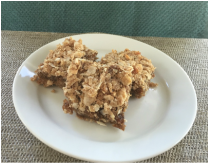 I'm thankful for leftover fig bars - that's what I ate while writing this!
I'm thankful for leftover fig bars - that's what I ate while writing this! Please don’t take this title to think I believe meat is poisonous - I enjoy meat and meatless meals equally. Honestly, I wasn’t familiar with the title saying prior to preparing this post. While thinking about what I wanted to write, I kept repeating something you may be more familiar with in my head, “What’s good for the goose is good for the gander”. However, I’ve selected "One man’s meat is another man’s poison" as my first blog title to exemplify both my personal beliefs as well as what I’ve learned to be true when it comes to food and nutrition. What is good for me may do harm to you and there are a myriad of reasons why this may be the case.
Meal to meal, day-to-day and decade-to-decade, the primary driving reason you eat the foods that you do will differ. Each time, the decision will ultimately be a personal one you arrive at due to your current social and cultural circumstances as well as individual preferences and health status. Eating, like most things in life, is a balance and what you eat is very personal and dependent upon many factors.
Throughout my blogs I intend to provide food & nutrition tips and tricks for meeting YOUR health goals. Sometimes the information may not apply to your current situation but it very well may be just what your family member or friend recently talked about. Remember, just because a famous person had success with a ‘XYZ diet’, it doesn’t mean it’s going to work for you. And just because a piece of advice worked for one of my clients, doesn’t mean it’s going to work for the other 100. There are evidenced based guidelines for how we should eat – check out the latest Dietary Guidelines for Americans. However, when it comes to the types and amounts of foods that go on your plate, there are a lot of options within those guidelines and if you are unsure what to try, a Registered Dietitian Nutritionist can help you!
Ask yourself:
According to the 2016 Food and Health Survey by the International Food Information Council, TASTE continues to be the leading reason you select the food that you do more often. Price, healthfulness, convenience and with a growing impact, sustainability, all follow taste as the leading reasons you eat what you do.
I would love to hear from you so that I can tailor my tips, tricks and general advice to your needs. Feel free to e-mail me or leave a comment below. If you are willing, please let me know in the comment section two things: 1) What was the last thing you ate and 2) why did you eat it?
Meal to meal, day-to-day and decade-to-decade, the primary driving reason you eat the foods that you do will differ. Each time, the decision will ultimately be a personal one you arrive at due to your current social and cultural circumstances as well as individual preferences and health status. Eating, like most things in life, is a balance and what you eat is very personal and dependent upon many factors.
Throughout my blogs I intend to provide food & nutrition tips and tricks for meeting YOUR health goals. Sometimes the information may not apply to your current situation but it very well may be just what your family member or friend recently talked about. Remember, just because a famous person had success with a ‘XYZ diet’, it doesn’t mean it’s going to work for you. And just because a piece of advice worked for one of my clients, doesn’t mean it’s going to work for the other 100. There are evidenced based guidelines for how we should eat – check out the latest Dietary Guidelines for Americans. However, when it comes to the types and amounts of foods that go on your plate, there are a lot of options within those guidelines and if you are unsure what to try, a Registered Dietitian Nutritionist can help you!
Ask yourself:
- Do you have a health condition that dictates foods you can/can't eat?
- Do you have the knowledge & tools required to prepare what you like?
- Do you have time to prepare the foods you desire?
- Do you like the taste of the food you are eating?
- Can you afford the foods you would like to eat?
According to the 2016 Food and Health Survey by the International Food Information Council, TASTE continues to be the leading reason you select the food that you do more often. Price, healthfulness, convenience and with a growing impact, sustainability, all follow taste as the leading reasons you eat what you do.
I would love to hear from you so that I can tailor my tips, tricks and general advice to your needs. Feel free to e-mail me or leave a comment below. If you are willing, please let me know in the comment section two things: 1) What was the last thing you ate and 2) why did you eat it?
Caroline
I'm a busy mom with a passion for sharing practical advice to help you live the healthy and balanced life you envision. Warning: the information is evidenced-based, but the delivery will often contain humor!
Archives
May 2017
March 2017
February 2017
January 2017
September 2016
August 2016
July 2016
June 2016





















